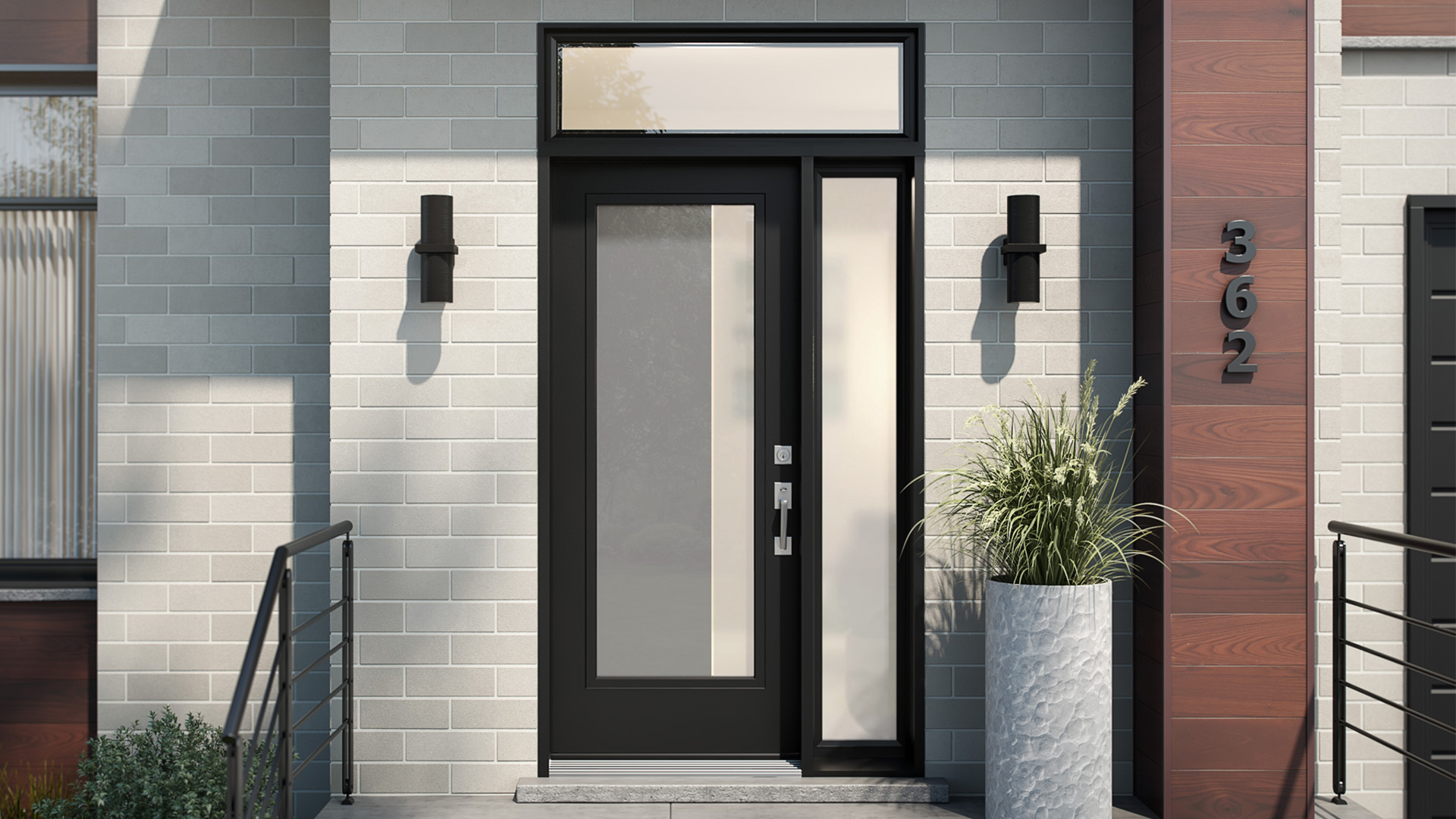What do you call an outside door?
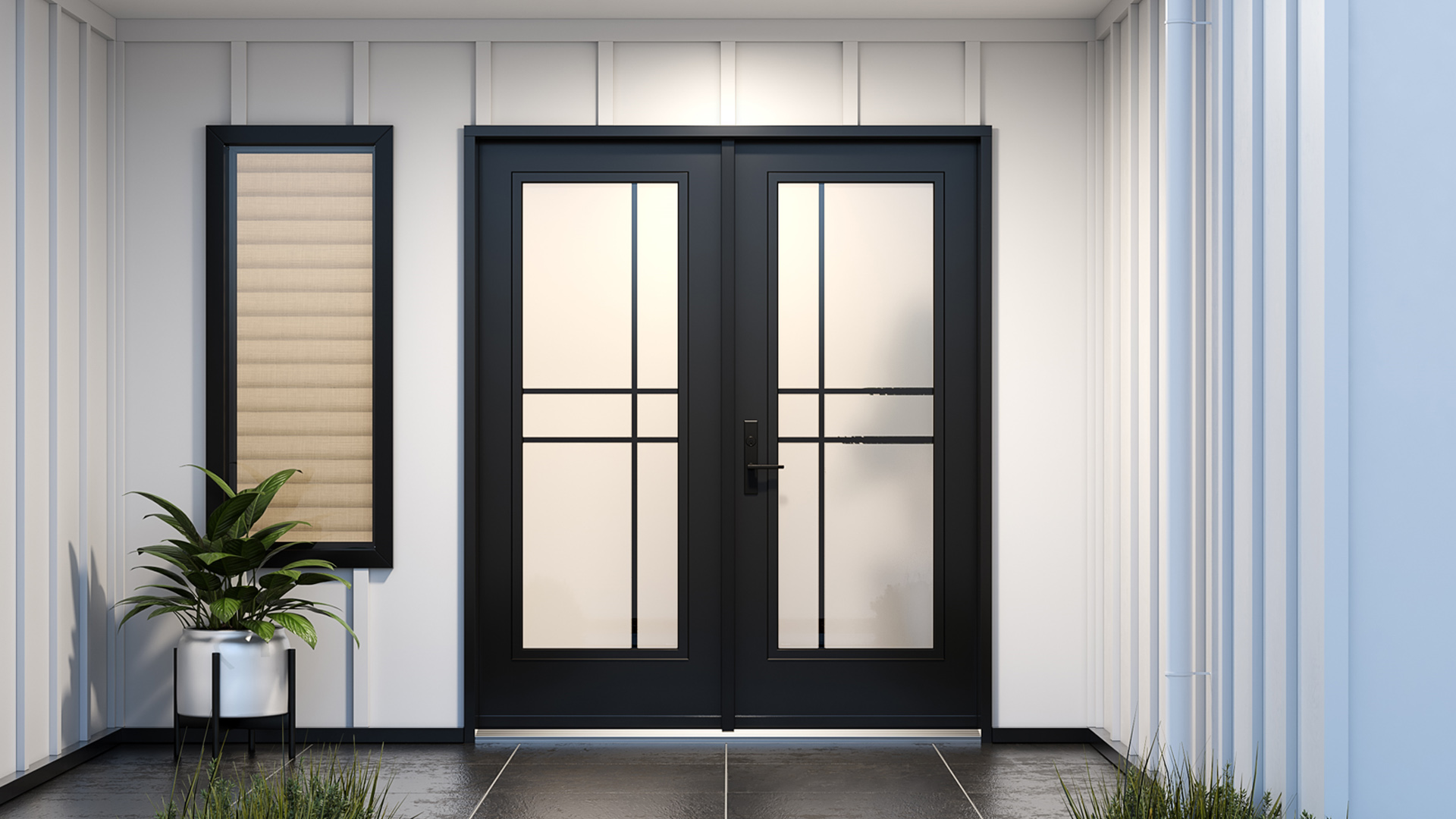
Introduction to Outside Door
An exterior door does much more than offer security – it sets the tone for your home’s first impression. In this section, we’ll dive into the world of outside doors, explain what they are, why choosing the right one matters, and even take a quick look at their history.
What is an Outside Door?
An outside door, also called an exterior door, is the entrance to your home or any building from the outside world. It serves as both a physical barrier and a crucial element of your home’s design. These doors are typically made of strong materials, designed to withstand weather, provide security, and enhance the overall aesthetic of your home.
Think of it this way: an outside door is the gateway to your living space, offering protection and privacy while still being an integral part of the home’s curb appeal. It might be a sturdy steel door, a classic wooden door, or even a modern glass door, but whatever style you choose, it should fit your home’s needs and your personal taste.
Why is it Important to Choose the Right Outside Door?
Choosing the right outside door is more than just picking one that looks nice. It’s about making sure it’s secure, functional, and energy-efficient. The door you choose will impact your home’s energy bills, safety, and overall appearance.
For example, a high-quality exterior door with proper insulation can help keep your home warm in the winter and cool in the summer. On the other hand, a poorly insulated door can lead to drafts, causing your heating and cooling system to work harder and resulting in higher energy bills.
Additionally, a solid, durable outside door will keep your home safe from break-ins, while a poorly constructed one could be an easy target for intruders. Don’t forget about the style and design; the right door can enhance your home’s curb appeal, adding value to your property and making a lasting impression on visitors.
A Brief History of Exterior Door
The concept of the exterior door dates back thousands of years. Early doors were simple openings covered by wooden planks or animal hides, offering little more than basic protection from the elements. As civilizations evolved, so did the outside door.
In ancient Egypt, for example, doors were often made of heavy, ornate wood or stone, designed to impress and signify importance. The exterior doors of palaces and temples were usually decorated with symbols and artwork.
As time passed, the design and materials of doors evolved. During the Middle Ages, large wooden doors were common in castles, designed not only for security but also to display the power and status of the inhabitants. These doors were often reinforced with iron bands and locks.
In the 19th and 20th centuries, with the rise of industrialization, outside doors became more standardized and accessible to the average person. New materials, like steel and fiberglass, were introduced, making doors more durable and affordable. The modern exterior door we know today is a combination of function and form, with an endless variety of materials, styles, and finishes to choose from.
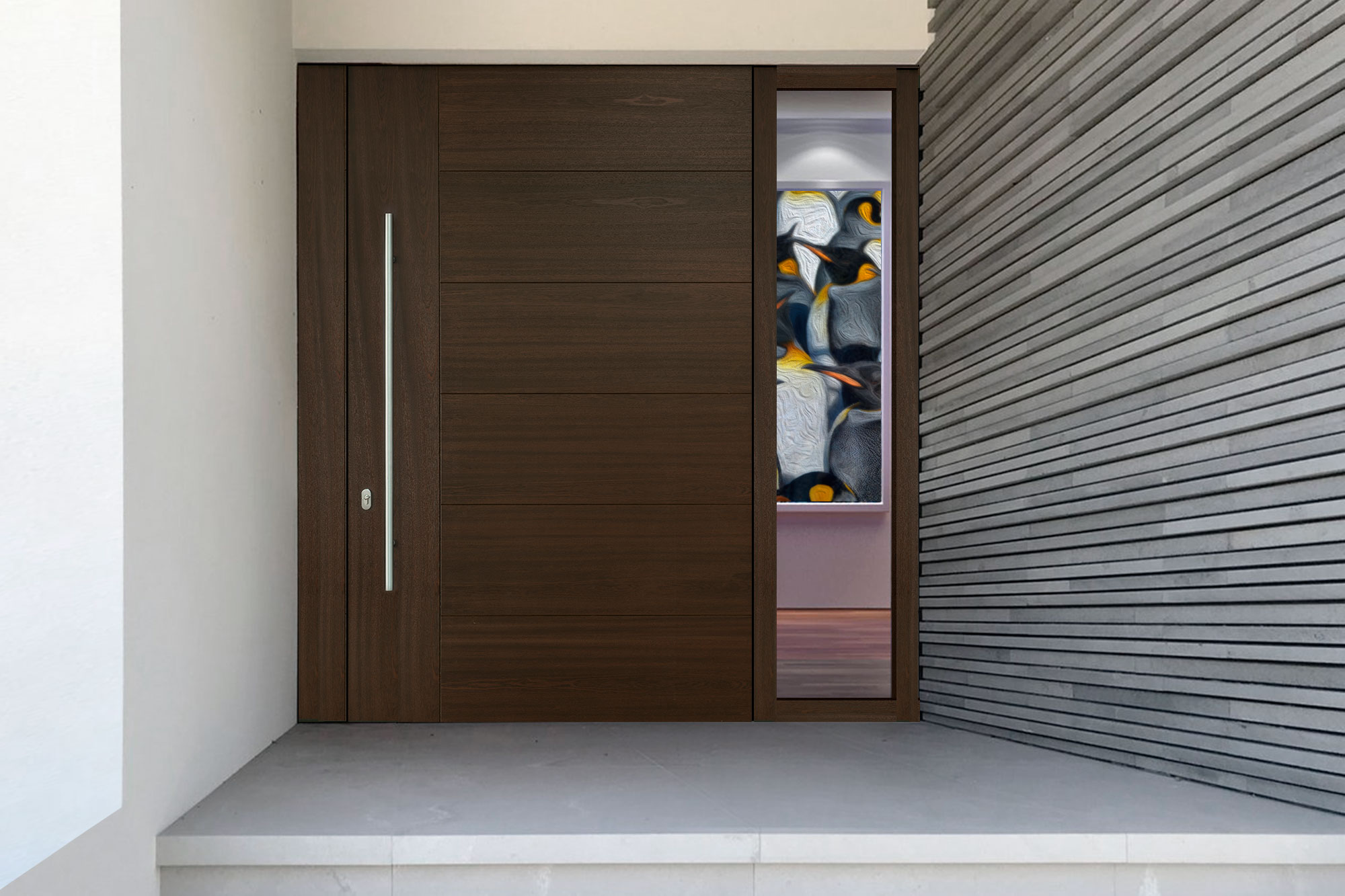
Types of Outside Door
When it comes to exterior doors, selecting the right style can significantly impact both the functionality and aesthetics of your home. There are several types of exterior doors, each designed to meet specific needs, whether it’s for security, style, or functionality. Let’s explore some of the most popular options and help you decide which one might be the best fit for your home.
Single vs. Double Doors
Single doors are the most common type of outside door, especially in homes with limited entryways. A single door typically features one panel and is perfect for smaller spaces or homes that don’t need a wide entry. It’s simple, cost-effective, and often easier to install and maintain. For many homeowners, a single exterior door is all they need to create a secure and welcoming entryway.
On the other hand, double doors offer a grander and more open entry. These outside doors consist of two panels that swing open, providing a wider entrance. Double doors are often used in larger homes, entryways, or areas that require easy access, such as patios or gardens. They give a luxurious feel and are ideal for homeowners who love to entertain or want to create a dramatic, impressive look.
So, how do you choose between the two? It all depends on your needs. If you have a smaller entryway, a single door might be the most practical choice. However, if you want to create a more spacious, dramatic effect, double doors could be the perfect fit. Consider the size of your entry space and the amount of room you need for moving furniture or accommodating guests.
Pivot Door
A pivot door is a unique and modern style of outside door that has gained popularity in contemporary architecture. Unlike traditional doors, which are hinged on the side, a pivot door rotates on a central pivot point. This allows the door to open smoothly with a larger, more fluid motion, making it a striking feature in any home.
One of the biggest benefits of a pivot exterior door is its sleek and modern design. These doors are often oversized, adding a bold, sophisticated look to the entryway. Pivot doors can be made from a variety of materials, including wood, steel, or glass, offering flexibility in design. They’re often chosen for their aesthetic appeal and their ability to make a bold statement.
If you’re looking for a door that’s both functional and stylish, a pivot door might be the way to go. They’re ideal for homeowners who want a modern touch, but they also work well in homes with larger, open entryways. The smooth, effortless movement of a pivot door adds an element of luxury and elegance, making it a great option for those seeking something distinctive and visually appealing.
French Door
French doors are a timeless and elegant choice for outside doors, especially if you want to bring the outdoors inside. These doors are typically made up of two hinged panels with glass panes, allowing plenty of natural light to flood into your home. French doors are often used for patios, gardens, or as a connection between living spaces and outdoor areas.
What makes French exterior doors so appealing is their combination of style and functionality. The large glass panels allow for a clear view of the outside, while the elegant design can enhance your home’s charm and curb appeal. Whether you opt for a traditional wood frame or a more modern metal finish, French doors can complement a wide range of architectural styles, from classic to contemporary.
In addition to their beauty, French doors offer great flexibility. They can be opened fully to create a seamless transition between indoor and outdoor spaces, or partially opened to let in fresh air and light. If you’re someone who enjoys hosting gatherings or loves having a view of your garden, French doors are a great option for an outside door that adds both function and style.
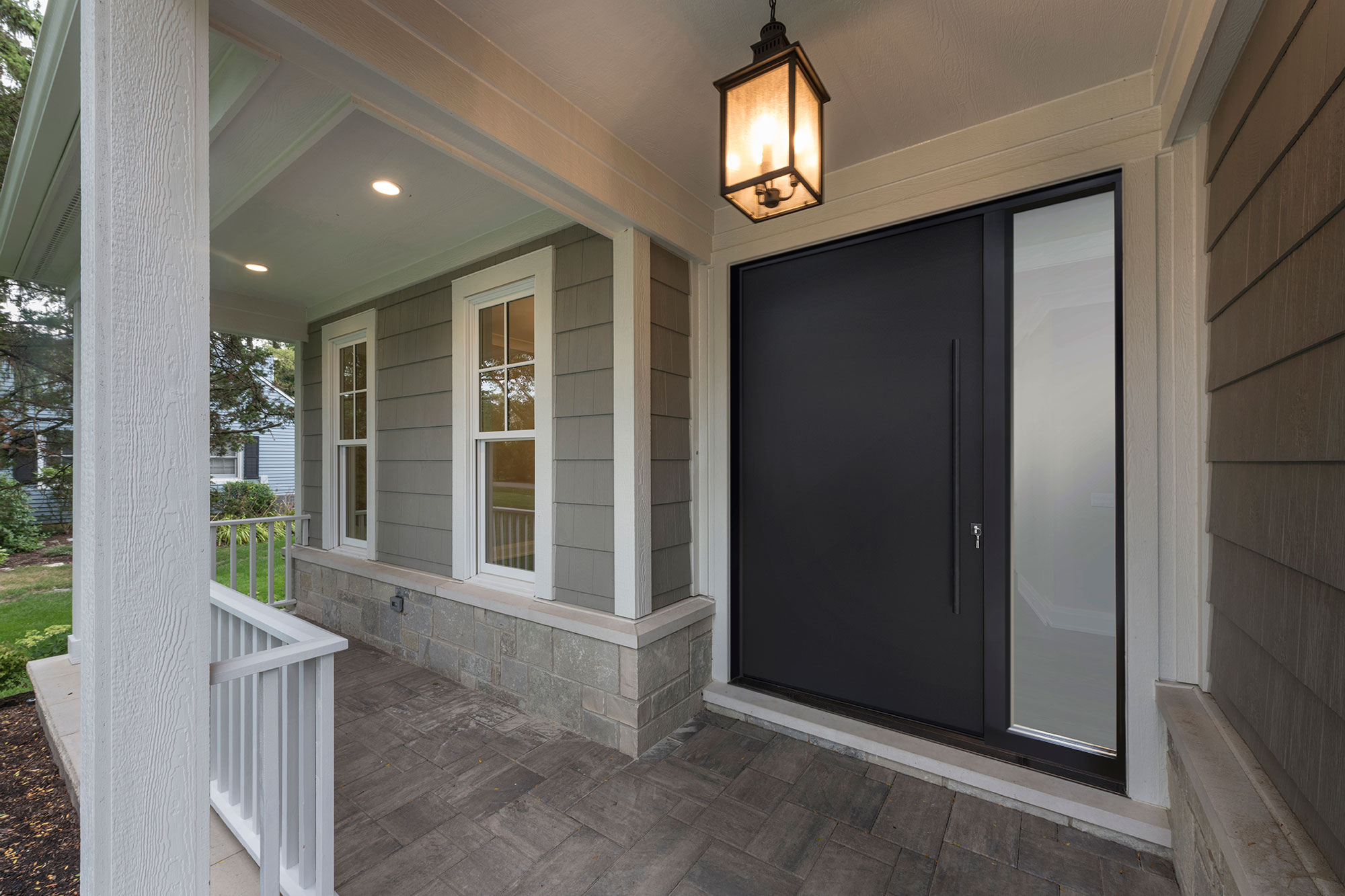
Common Materials Used for Exterior Doors
When it comes to choosing the best outside door for your home, the material plays a huge role in its appearance, durability, and functionality. The material you choose will affect everything from your door’s security to its ability to withstand the elements.
Wood
Wooden doors have long been a popular choice for outside doors, and for good reason. Wood offers a timeless, natural appearance that suits many architectural styles. Whether you’re going for a traditional or modern feel, a wooden exterior door can add warmth and elegance to your home.
One of the biggest benefits of wood doors is their customizability. Wood can be stained, painted, or left in its natural finish, allowing you to match your door to your home’s unique style. It’s also a great option if you want to create a welcoming, classic entryway.
However, wooden doors do come with a few downsides. They require regular maintenance to maintain their appearance. Wood can warp or swell when exposed to moisture, so it’s important to treat and seal the door to prevent damage. Additionally, wood doors may not be the best option in areas with extreme weather conditions unless they are properly protected.
Steel
Stainless steel doors are a strong and secure option for outside doors, making them ideal for homeowners who prioritize safety and durability. Steel is one of the most secure materials for exterior doors, as it’s difficult to break through, making it a great choice for those who want to protect their home from intruders.
In addition to their security benefits, steel exterior doors are also low-maintenance and long-lasting. Unlike wood, steel doesn’t warp or swell when exposed to the elements, making it a great choice for areas with high humidity or extreme temperatures. Steel doors are also energy-efficient, as they can be insulated to help keep your home warm in the winter and cool in the summer.
One downside of steel doors is that they can be more prone to dents and scratches. If the door gets damaged, it can be more difficult to repair compared to other materials. However, with proper care and maintenance, a steel door can provide excellent security and last for many years.
Fiberglass
Fiberglass doors are quickly becoming one of the most popular options for outside doors, and it’s easy to see why. They combine the look of wood with the durability and low-maintenance qualities of other materials. Fiberglass exterior doors can be made to resemble wood, with the added benefit of being resistant to warping, cracking, and rotting.
One of the biggest advantages of fiberglass doors is their energy efficiency. These doors are typically filled with foam insulation, which helps reduce energy loss and maintain your home’s temperature stability. They’re also highly resistant to the elements, making them a great option for areas that experience extreme weather.
Fiberglass doors are low-maintenance and require minimal care, with only occasional cleaning needed. They don’t need to be repainted or resealed as often as wood doors, which can save you time and money in the long run. However, they can be more expensive upfront compared to other materials, though their durability and energy efficiency make them a worthwhile investment.
Aluminum
Cast aluminum doors are another excellent option for exterior doors, particularly if you’re seeking a lightweight, modern appearance. Aluminum exterior doors are strong and resistant to rust, making them a good choice for homes in coastal areas where saltwater can cause other materials to corrode.
One of the main benefits of aluminum doors is their durability. They’re resistant to weather damage, including sun, rain, and wind, making them ideal for homes in harsh climates. Aluminum is also a low-maintenance material, requiring only occasional cleaning to maintain its appearance.
Another advantage of aluminum exterior doors is their sleek, modern appearance. These doors often feature sleek frames and can be paired with large glass panels, offering a contemporary look that complements modern homes. However, aluminum doors may not provide the same level of insulation as other materials, so they may not be the best choice if energy efficiency is your top priority.

Key Features to Look for in an Outside Door
When selecting an exterior door, several factors should be considered to ensure it meets both your functional needs and aesthetic preferences. A well-selected door not only enhances your home’s security but also plays a significant role in energy efficiency, durability, and overall curb appeal. Let’s explore the key features that make an outside door the ideal choice for your home.
Energy Efficiency and Insulation
One of the first things to look for in an outside door is energy efficiency. An energy-efficient door helps keep your home comfortable year-round by preventing drafts and temperature fluctuations. Insulation is crucial in this regard. Doors with proper insulation can help reduce heating and cooling costs by maintaining a consistent temperature inside your home. Look for doors made with materials like fiberglass or steel, which offer excellent insulation properties. Additionally, double-glazed windows or thermal breaks in the door’s frame can further boost its energy efficiency.
An insulated outside door can be a great investment, as it helps regulate your home’s internal temperature and reduces your reliance on heating and cooling systems. This, in turn, lowers energy bills and contributes to a more eco-friendly home.
Durability and Weather Resistance
Another essential feature is durability and resistance to weather conditions. Your outside door is exposed to the elements every day, from rain and snow to intense sun and wind. Therefore, it needs to withstand harsh conditions and still function effectively. Look for doors made of high-quality materials, such as solid wood, fiberglass, or steel. These materials are durable and can handle the wear and tear that comes with weather exposure.
Steel doors, for example, are not only strong but also offer excellent resistance to warping, cracking, and splitting, making them a great choice for homes in areas with extreme weather. Fiberglass doors are another durable option, as they resist dents and scratches while maintaining their integrity through various temperature changes. A weather-resistant door will also prevent moisture from seeping in, which can cause mold, rust, or other types of damage.
Aesthetic Appeal and Curb Appeal
The appearance of your outside door can dramatically impact your home’s curb appeal. After all, it’s one of the first things people notice when approaching your home. When selecting a door, consider the style that best complements the overall look of your home. Whether it’s a sleek modern design, a classic wood look, or something more ornate, the door should fit seamlessly with the architecture of your home.
Don’t forget about the color and finish. A bold-colored door can make a statement, while a neutral tone blends well with any exterior design. The door’s material also affects its look; for instance, a wood door adds warmth and charm, while a steel or fiberglass door offers a more polished, contemporary feel.
Door Hardware: Locks, Handles, and Hinges
Lastly, don’t overlook the importance of quality door hardware. The locks, handles, and hinges you choose for your exterior door contribute not only to its functionality but also to its overall appearance. For security purposes, make sure the door has a high-quality lock system. Deadbolts and smart locks are excellent options for added protection.
The handle and hinges should complement the door’s design while also providing durability. Look for handles made from materials like brass, stainless steel, or bronze, which resist corrosion and maintain their appearance over time. Hinges, too, need to be strong enough to support the door’s weight and allow for smooth opening and closing. If your door is particularly heavy, ensure the hinges are reinforced to prevent damage.
In addition to their functional role, these hardware elements contribute to the door’s aesthetic appeal. Select finishes and designs that complement the door’s overall appearance, creating a cohesive look for your home’s exterior.
Summary
In conclusion, when selecting an exterior door, focus on key features such as energy efficiency, durability, aesthetic appeal, and high-quality hardware. By selecting a door that excels in these areas, you’re not only enhancing your home’s security and comfort but also improving its overall appearance and value.

Choosing the Right Style for Your Home
Selecting the right style for your outside door is crucial. From traditional to contemporary, and from custom to pre-hung, choosing the right exterior door can enhance your home’s curb appeal and functionality. Let’s explore the various options available and learn how to select the best style for your home.
Traditional vs. Contemporary Door Designs
When it comes to choosing a design for your outside door, you’ll need to decide between traditional and contemporary styles. Both offer distinct looks, so understanding the differences can help you pick the right one for your home.
Traditional Doors
Traditional doors are known for their timeless elegance. These doors often feature intricate woodwork, raised panels, and detailed carvings. They may come in solid wood, which adds warmth and a classic feel. A traditional door style is ideal for homes with a vintage or classic exterior, such as those with a Colonial, Craftsman, or Victorian design. These doors bring a sense of charm and history that never goes out of style.
Contemporary Doors
On the other hand, contemporary doors are more modern and streamlined. These doors often have minimalist designs with clean lines and subtle details. Materials such as fiberglass and steel are commonly used in contemporary door designs because they offer a sleek and polished appearance. Contemporary doors may also include large glass panels, allowing more natural light to enter your home. These are perfect for modern or industrial-style homes and can create a fresh, clean look on your exterior.
Custom vs. Pre-Hung Doors
Another important decision when selecting your outside door is whether to choose a custom or pre-hung option. Both have their advantages, and the right choice depends on your specific needs and preferences.
Custom Doors:
Custom doors are made to fit your exact specifications. With a custom door, you have the freedom to select the materials, design, and dimensions that best suit your home. Whether you want a unique color, an intricate design, or a specific type of glass, custom doors give you complete control over every detail. This option is ideal for homeowners seeking something unique that complements their home’s style perfectly. However, custom doors tend to be more expensive and may take longer to produce and install.
Pre-hung Doors:
On the other hand, pre-hung doors come as a complete unit, already installed in a frame. These doors are generally more affordable and faster to install, making them a popular choice for many homeowners. They come in a variety of styles and sizes, but the designs are typically more standard compared to custom options. Pre-hung doors are a great choice if you want a simple and cost-effective solution, or if you’re replacing an existing door and want a quick upgrade.
Summary
Both custom and pre-hung doors can be excellent choices for your home, but the decision depends on your budget, timeline, and design preferences. If you want something truly unique, a custom door might be the ideal choice. If you’re looking for a more straightforward option, a pre-hung door could be just what you need.
Choosing Colors and Finishes for Your Exterior Door
The color and finish of your outside door play a significant role in the overall look of your home. The right color can complement your exterior design, while the wrong color can make your home look unbalanced. Here’s how to choose the perfect colors and finishes for your door.
Start by considering the color of your home’s exterior. If your home has neutral tones like beige, gray, or white, a bold-colored door can create a striking contrast. Bright shades like red, blue, or green can add personality and make your entrance stand out. If you prefer a more subtle look, a dark wood finish or neutral shades like black, charcoal, or navy blue can provide a sophisticated appearance.
Don’t forget about the door’s finish. A wooden door can be treated with a stain or a paint finish, depending on the desired look. Stained finishes highlight the natural grain of the wood, adding warmth and texture, while painted finishes provide a more uniform and modern appearance. If you choose a fiberglass or steel door, you’ll find finishes that mimic the look of wood while offering the durability and low maintenance of these materials.
When selecting a finish, also consider the maintenance required for it. A high-gloss finish requires regular cleaning to maintain its shine, whereas matte finishes may hide dirt and fingerprints more effectively. Ultimately, the finish should align with both the style of your home and the level of maintenance you’re willing to do.
Summary
In conclusion, when selecting the right exterior door for your home, it’s essential to consider the style, material, and finish that best suit your needs. Whether you prefer a traditional or contemporary design, a custom or pre-hung door, or a bold or subtle color, there are countless options to choose from.
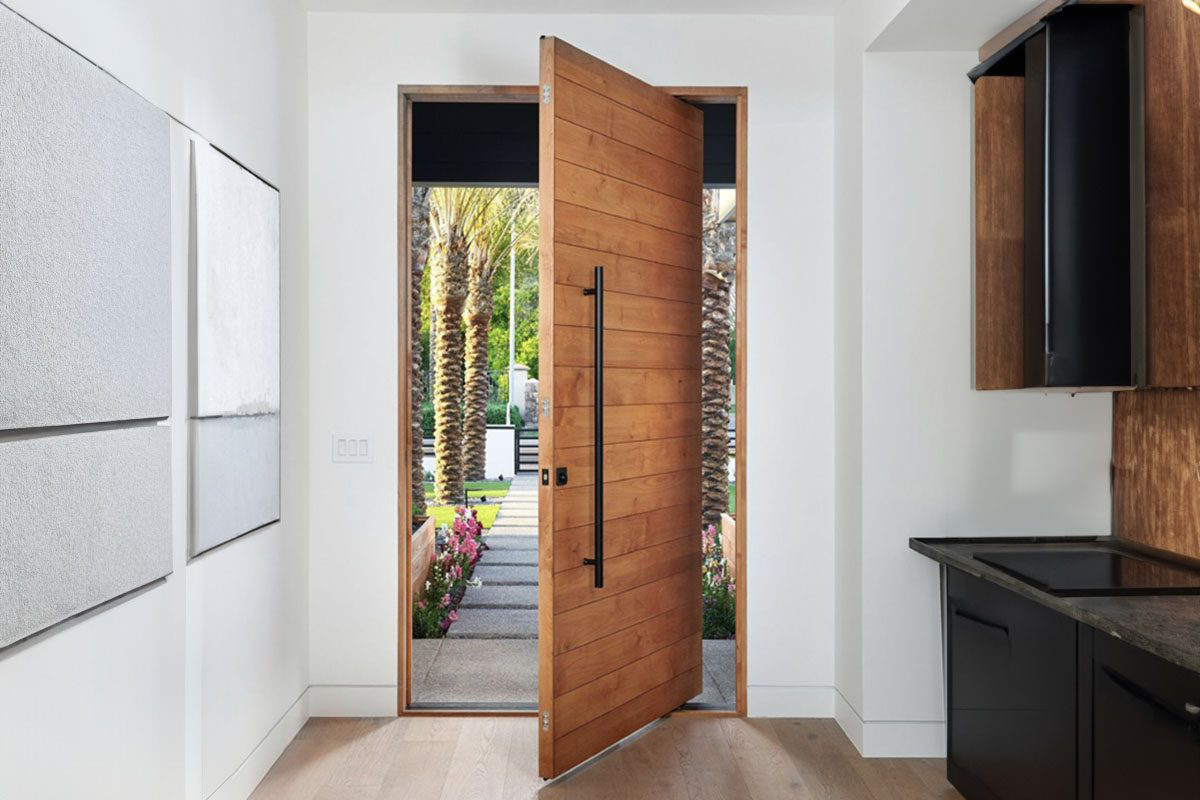
Maintenance Tips for Your Outside Door
Your exterior door plays a crucial role in protecting your home and enhancing its curb appeal. To keep it looking great and functioning well, regular maintenance is key. Whether your door is made of wood, metal, or fiberglass, taking care of it can help extend its lifespan.
Cleaning and Caring for Your Exterior Door
Regular cleaning is the most basic yet effective way to maintain your outside door. A clean door not only looks better but also helps preserve its material and finish. Start by wiping down the door with a soft cloth and warm, soapy water. Avoid using harsh chemicals, as they can damage the door’s finish. For metal and fiberglass doors, a mild detergent is sufficient to remove dirt and grime.
If your door has glass panels, make sure to clean them with a glass cleaner or a vinegar-water solution. Don’t forget to clean around the door frame, as dirt and debris can accumulate here as well. For wooden doors, use a wood-safe cleaner to avoid stripping the natural finish.
After cleaning, dry the door thoroughly with a microfiber cloth to prevent any moisture from lingering and causing damage. Regular cleaning helps prevent buildup that could lead to stains or mold growth, particularly in areas with high humidity.
How to Prevent Rust and Wear on Metal Doors?
Metal doors are durable and secure, but they can be prone to rust and wear, especially if exposed to harsh weather conditions. To prevent rust and maintain your metal door’s good condition, start with regular inspections. Check the door for any signs of scratches or chips in the paint, as these can expose the metal to moisture, leading to rust.
If you find any damage, touch up the area with rust-resistant paint as soon as possible. It’s also important to apply a coat of protective sealant to metal doors. This sealant creates a barrier that prevents moisture from coming into direct contact with the metal, thereby reducing the likelihood of rust formation. For doors exposed to extreme weather, consider using a silicone-based sealant that can withstand temperature fluctuations.
In addition, regularly clean the surface of your metal door. Dust, dirt, and water can accumulate over time, leading to wear. Wiping down the door and ensuring that any water or debris is quickly dried off can go a long way in preventing long-term damage. If your metal door has locks or hinges, lubricate them periodically to keep them functioning smoothly and to avoid rust from building up in those areas.
How to Repaint or Refinish a Wooden Door?
Wooden doors are beautiful and add charm to your home, but they require a bit more maintenance to keep them looking fresh. Over time, wooden doors can become weathered, faded, or scratched. Repainting or refinishing your door is an excellent way to restore its appearance and protect it from the elements.
First, remove any hardware such as handles, locks, or hinges. Then, use a mild cleaner to wash the door’s surface, removing dirt, dust, and old paint. If the door has peeling paint, use a scraper or sandpaper to remove it. Be sure to sand the surface lightly to create a smooth base for the new finish.
Once the door is clean and smooth, apply a primer designed for wood. This will help the paint or stain adhere more effectively and provide additional protection. After the primer dries, you can apply your desired paint or stain. For a smooth finish, use a high-quality paintbrush or a small roller, and apply thin, even layers. Allow the paint to dry completely between coats, and add a protective clear coat once the final layer is dry.
Regularly refinishing or repainting your wooden door not only improves its appearance but also helps protect it from moisture, UV rays, and physical wear. A well-maintained wooden door can last for years and continue to enhance the beauty of your home.
Summary
Maintaining your outside door is crucial to keeping it looking great and functioning well. Whether you’re cleaning, preventing rust on a metal door, or refinishing a wooden door, regular care will ensure your door continues to protect your home while extend the lifespan of your door.

Troubleshooting Common Problems with Outside Door
Outside Doors face sun, rain, wind, and daily use. Sooner or later, they may not work as they should. A front entry door that sticks, a patio door that leaks air, or a wooden outside door that won’t shut tight can all be frustrating. The good news is that many of these problems are easy to check and fix without calling a professional. Let’s look at some of the most common issues.
When Your Door Doesn't Close Properly?
An Outside Door that won’t close right is more than an annoyance. It can let in cold air, raise your energy bill, and even reduce home security. The first thing to check is the hinges. Over time, the screws on heavy exterior doors can loosen. Use a screwdriver to tighten them. If the hinge is worn, replace it with a new one.
If the door still won’t shut, look at the strike plate on the frame. Sometimes, it shifts out of place. You can move it slightly or file the hole bigger so the latch clicks in smoothly. For a swollen wooden front door, the issue may be caused by humidity. Sand the sticking edge lightly and repaint it to seal out moisture.
Dealing with Drafts and Air Leaks
One of the biggest complaints about Outside Doors is the issue of cold drafts sneaking in. You might notice this around the bottom of a metal exterior door or along the sides of an older wooden outside door. To fix this, start with weatherstripping. It’s cheap and easy to install. Stick it around the frame so the door seals tight.
For gaps under the door, add a door sweep. This simple strip blocks cold air, dust, and even bugs from coming inside. If your outside entry door is still drafty, check the threshold. You can raise or replace it for a snugger fit. In colder regions, homeowners often use insulated exterior doors, which help keep the home warmer and reduce energy costs.
How to Fix a Sticking Door?
A sticking Outside Door is another common headache. You push, you pull, and it just won’t move smoothly. Most of the time, dirt and paint buildup are the primary causes. Clean the edges and sand any rough spots. If the door is still tight, check the hinges to ensure they are properly aligned. A sagging hinge makes the door rub against the frame. Tighten the screws or use longer ones that grab the wall stud.
With wooden outside doors, humidity can cause the material to swell. A quick fix is to sand down the sticking edge. Then, repaint or seal it so moisture doesn’t get back in. If you have a steel or fiberglass outside door, sticking usually means the frame is out of alignment. In that case, adjust the hinges or replace worn hardware.
Relate FAQ
What do you call an outside door?
An outside door is commonly referred to as an exterior door. This is the door that separates the interior of a building from the outside environment, typically designed for security, insulation, and aesthetic appeal. These doors are often made of sturdy materials, such as wood, steel, or fiberglass, to withstand the elements and provide protection.
What are the different types of outside doors?
There are several types of outside doors, including:
- Entry Doors: These are the main doors that people use to enter a home or building.
- Patio Doors: Large doors are often used to provide access to outdoor spaces, such as patios or gardens. They can be sliding or hinged.
- Storm Doors: These doors are designed to provide an extra layer of protection against the weather, often installed in front of entry doors.
- French Doors: Double doors that open from the center, often used for patios or as an elegant entryway.
- Security Doors: Doors built with reinforced materials and features designed to enhance security.
How do I choose the best outside door for my home?
When choosing the best outside door, consider factors like:
- Material: Wood, steel, and fiberglass are common materials for exterior doors, each offering different levels of security, insulation, and aesthetic value.
- Style: Choose a style that complements your home's design. Options include traditional, contemporary, and modern designs.
- Security Features: Look for doors with features such as deadbolts, reinforced frames, and impact-resistant glass to enhance security.
- Energy Efficiency: Opt for doors with good insulation to help maintain comfortable indoor temperatures and reduce energy costs.
Why is an outside door important?
Outside doors are crucial for several reasons:
- Security: They protect against unauthorized access to your home or building.
- Weather Protection: A solid, well-sealed door can keep out drafts, rain, and snow, improving your home's comfort.
- Aesthetic Appeal: The exterior door is one of the first things people notice, and it plays a major role in the curb appeal of your home.
- Privacy: An outside door ensures that your personal space remains private from the outside world.
How long does an outside door last?
The lifespan of an outside door can vary depending on the material and quality:
- Wooden Doors: Around 20-30 years, but they require regular maintenance to avoid warping or rotting.
- Steel Doors: Can last up to 30 years or more with minimal maintenance.
- Fiberglass Doors: Typically last between 30 and 50 years, providing excellent durability and resistance to various weather conditions.
How do I maintain my outside door?
To keep your exterior door in good condition:
- Clean Regularly: Dust and clean the surface to prevent dirt buildup.
- Inspect for Damage: Check for any cracks, dents, or weather damage, and repair as necessary.
- Seal Gaps: Ensure the door is properly sealed to prevent drafts and moisture entry.
- Lubricate Hardware: Regularly oil hinges and locks to keep them functioning smoothly.
